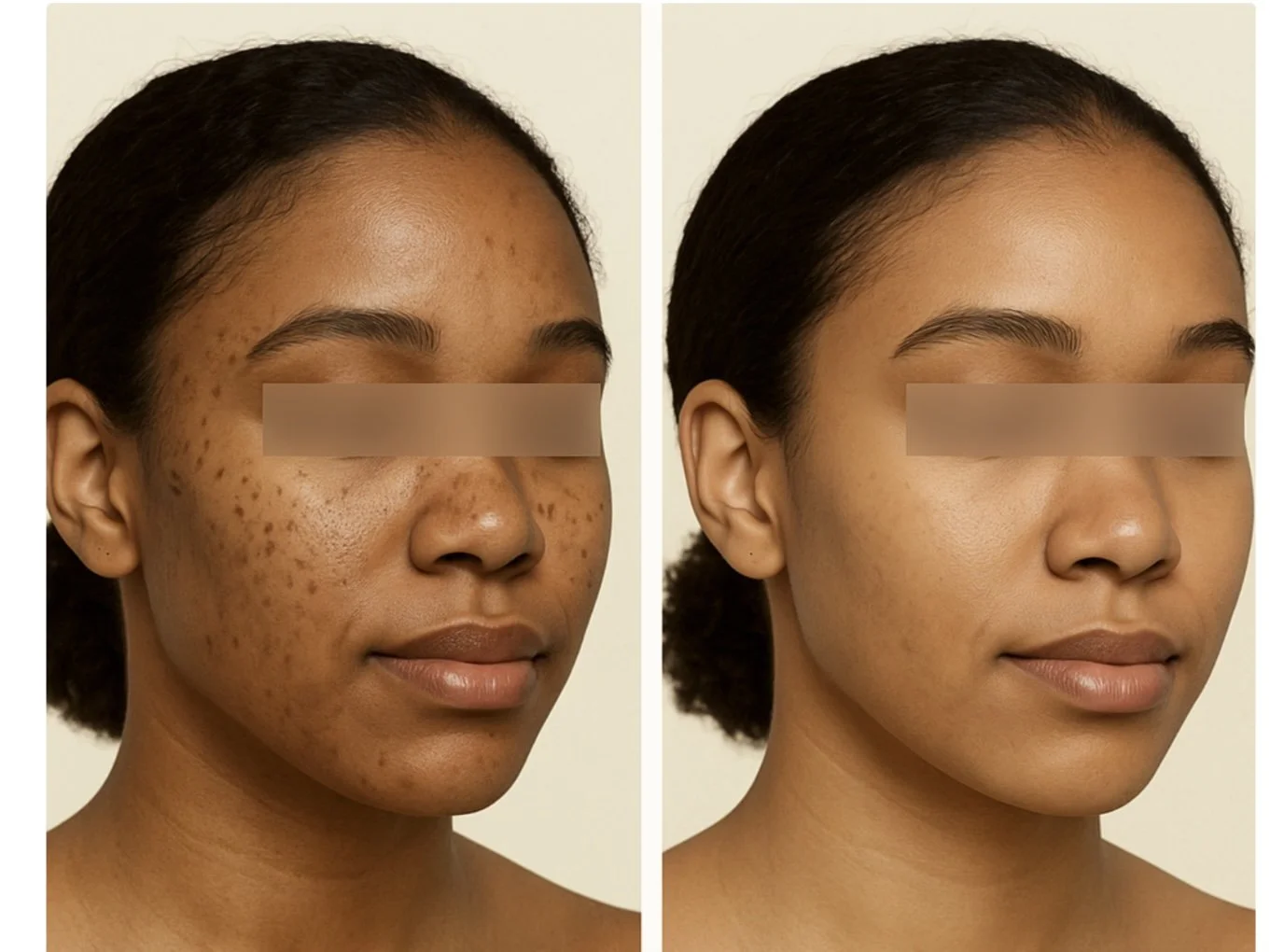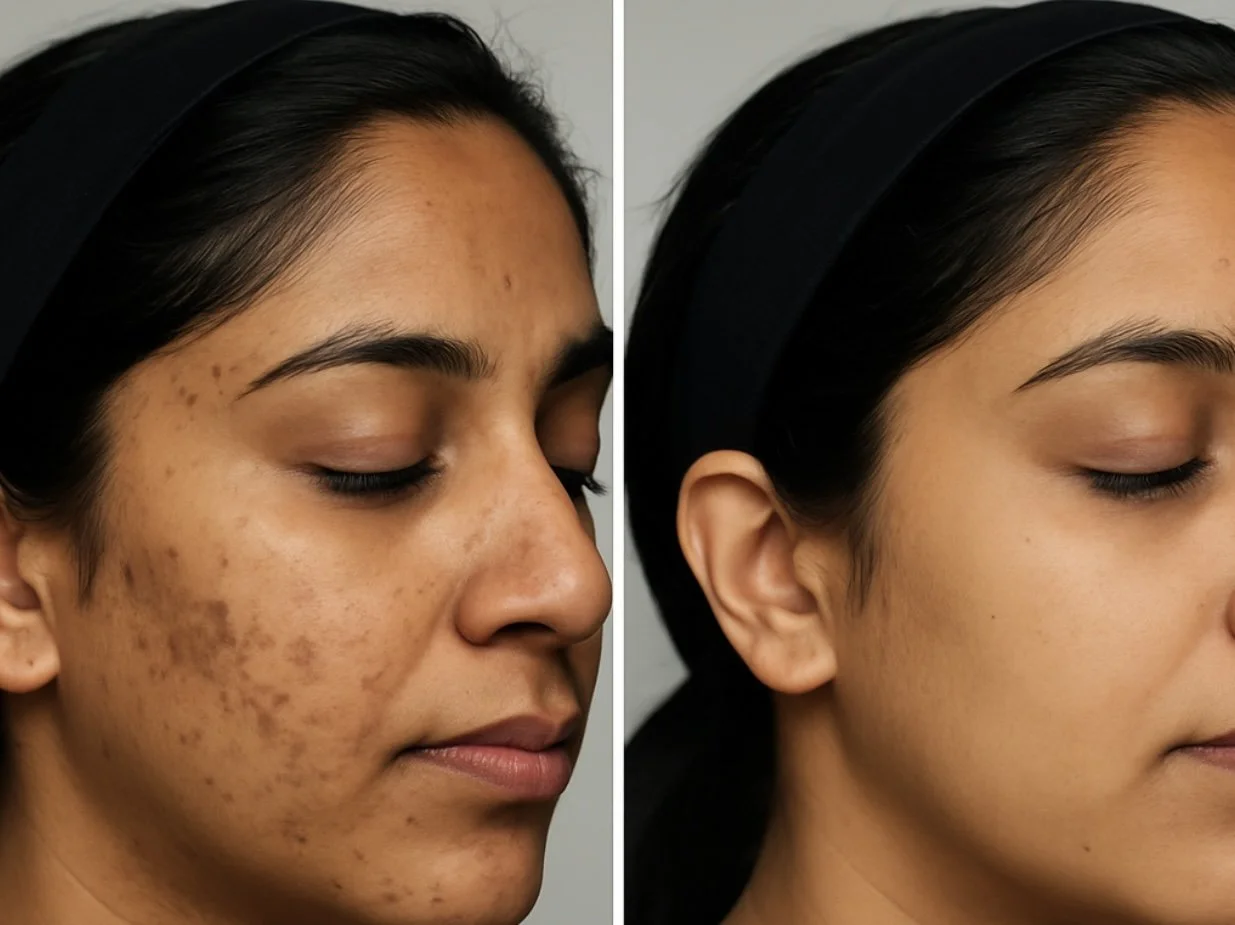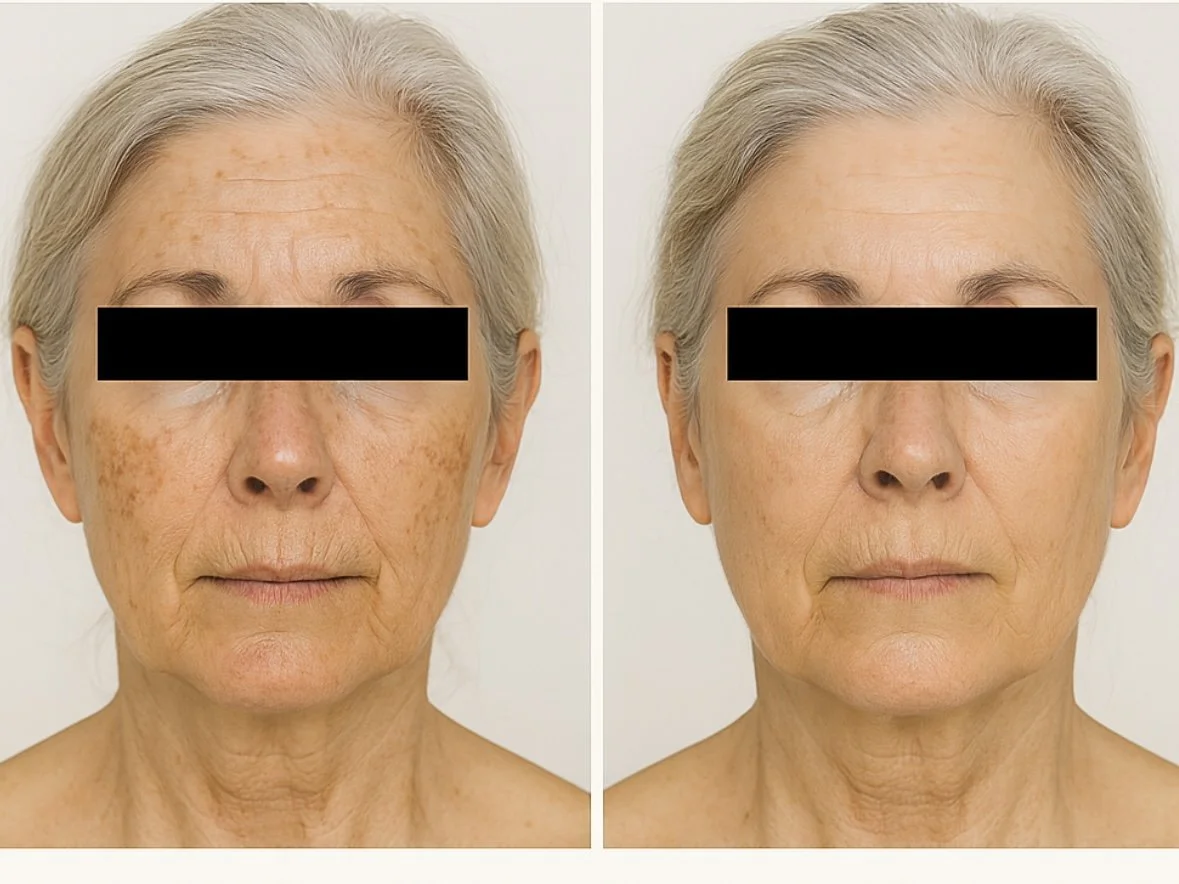Dark spots are part of your story — not a flaw
They’re caused by real changes in the skin.
That’s why they deserve evidence-based care.
Ingredients with Intention
Prescription Ingredients We Prescribe
-

Hydroquinone
A trusted prescription option for fading stubborn pigment. Hydroquinone helps reduce melanin production at the source.
-

Tretinoin
This isn’t an over-the-counter brightener. Tretinoin works deep to speed up cell turnover and smooth uneven tone.
-

Azelaic acid
A safe, steady multitasker. Azelaic acid helps fade excess pigment, calms redness, and supports your skin barrier.
-

Niacinamide
A gentle, supportive ingredient, niacinamide helps strengthen the skin barrier and balance tone.
Dark spots don’t need to be erased — but they deserve real treatment, not brightening hype
-
What are ‘dark spots’ really?
Uneven tone, lasting patches.
Dark spots (hyperpigmentation) happen when melanin collects in the skin, often triggered by hormones, sun, or inflammation. Not all dark spots are the same — and the right prescription depends on the cause -
What medications will I be prescribed?
Based on your SmartForm™ answers, you will be prescribed:
Tretinoin 0.025%–0.1% — accelerates cell turnover to smooth uneven tone and fade stubborn pigmentation.
Hydroquinone 4%–8% — a targeted pigment reducer used in cycles to lighten dark spots safely and effectively.
Azelaic Acid 15%–20% — calms redness and reduces excess pigment production, while supporting skin balance.
Niacinamide 4%–10% — strengthens the skin barrier and helps maintain even tone.
Most dark spot plans combine a retinoid with hydroquinone for dual action — exfoliation + pigment fading — adjusted to your skin tone and tolerance.
-
Real Results, Real Patience
Gradual change you can trust.
Dark spots fade with steady, consistent treatment — not quick fixes.Weeks 0–4: Mild dryness or early clearing may appear.
Weeks 4–8: Brighter, more even skin begins to show.
Weeks 8–12+: Deeper discoloration lightens further with ongoing use.
Results come gradually, but they last longer than cosmetic “brighteners.”
Dark spots fade with science, not hype. Proven care, real results.
FAQs
-
Because pigmentation forms deep in the skin, fading dark spots is a gradual process. Treatments like tretinoin, hydroquinone, and azelaic acid work by speeding up cell turnover and targeting melanin production — but visible results take consistent use, often 8–12+ weeks. This steady pace is what makes results more reliable and longer-lasting.
-
Yes. Our SmartForm helps match your prescription to your skin’s unique needs, including sensitivity and skin tone. Ingredients like azelaic acid and niacinamide are especially well-tolerated, even on sensitive or deeper skin, while stronger options are adjusted to keep results safe and effective without unnecessary irritation.
-
Most drugstore or cosmetic products rely on low-strength brighteners that can help with mild discoloration but often plateau. Prescription ingredients like tretinoin or hydroquinone target pigment at the source, making them more effective for stubborn or widespread spots. OTC products may support results, but lasting change usually requires prescription-strength care.
-
Dark spots can return if triggers — like sun exposure or inflammation — aren’t managed. That’s why your plan may include ongoing care, such as maintenance with niacinamide or azelaic acid, and daily sun protection. Consistent follow-up helps keep skin tone even and results longer-lasting.




